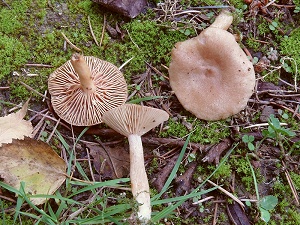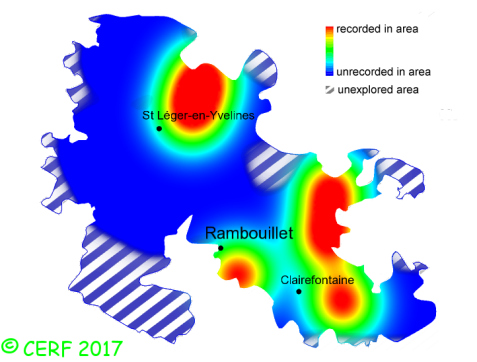| Lactarius glyciosmus (Fr.:Fr.) Fr. |
|
|
|
|
|
|
The cap is pale grey to flesh pink, with a central umbo. The cap surface is without concentric bands, slightly viscid in wet weather. The stem is white then straw, without ring. The flesh is white then pink cream, unchanging; its taste is mild to bitter; the odour is quite strong, of coconut; its texture is grainy (breaking like a chalk stick), exuding when cut a white, unchanging milk. The gills are cream then pinkish, decurrent, crowded . The spore print is white. This species is mycorrhizal. It grows in deciduous or mixed woods, on a rather acid soil, most of the time with birch, sometimes with alder or willow. The fruiting period takes place from July to November.
Chemical tests : none. Distinctive features : Pale grey to pinkish cap; smell of coconut; white or transparent milk, not abundant, unchanging, mild to acrid; under birch Lactarius glyciosmus is quite rare and localised in the forest of Rambouillet, and is frequent, more generally speaking . | ||
|
page updated on 14/01/18

